Table of Contents
The geography of Turkey is a captivating blend of diverse landscapes and historical significance. Located at the crossroads of Europe and Asia, this nation’s geographic location has played a pivotal role in shaping its history and cultural identity.
Situated between the Black Sea and the Mediterranean, Turkey geography beckons adventurous travelers with its extensive coastlines, formidable Anatolian plateau, and iconic mountain ranges. From exploring the majestic landscapes of Cappadocia to uncovering the cultural tapestry of Istanbul, Turkey’s diverse landscapes and rich history offer an unforgettable journey for intrepid tourists seeking a unique and enriching experience.
The physical geography of Turkey paints a picture of awe-inspiring natural wonders. From the breathtaking travertine terraces of Pamukkale, symbolizing the nation’s geothermal wonders, to the diverse ecosystems that span from the dense forests to the rugged steppes, Turkey stands as a testament to nature’s grandeur.

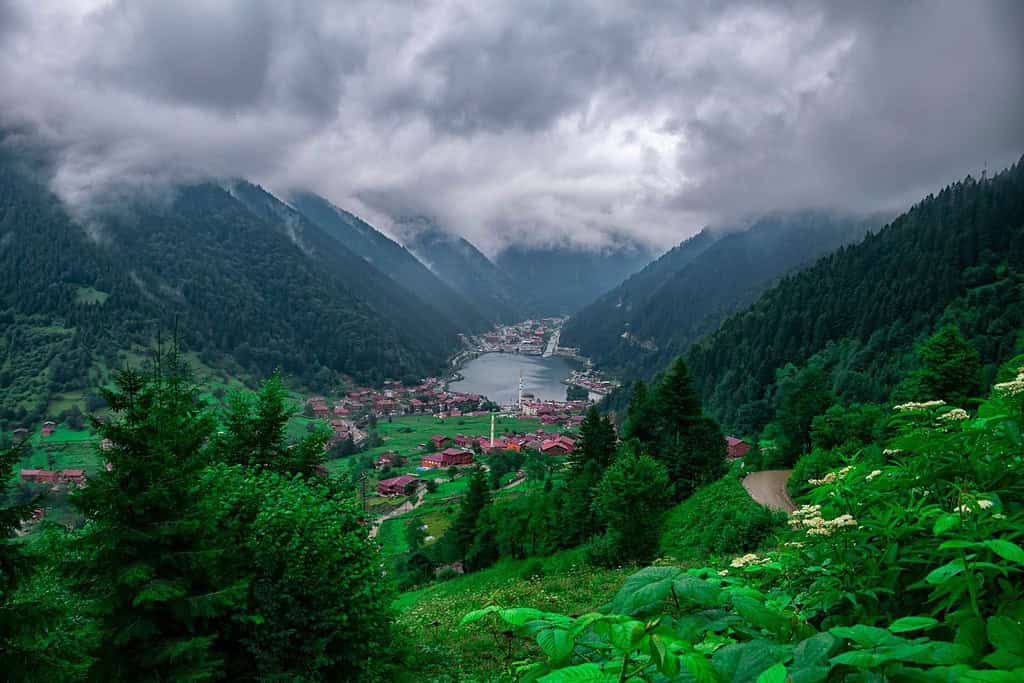
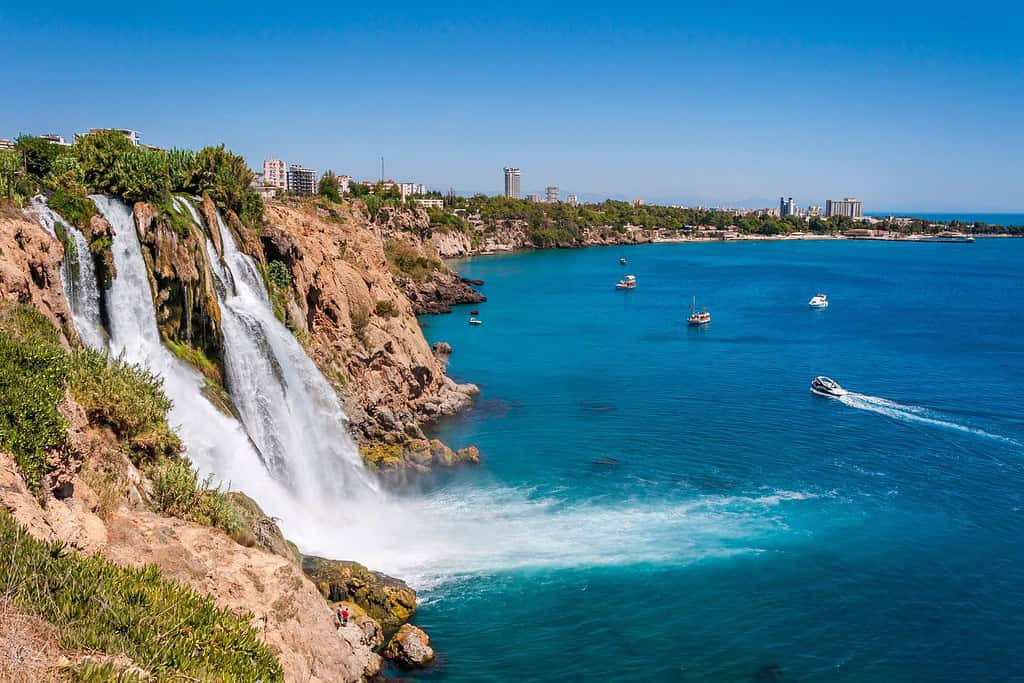
Top Geographic Features of Turkey
- Taurus Mountain Range: This imposing mountain range stretches across southern Turkey, influencing its topography and climate, and is home to several peaks that are significant for the region.
- Kızılırmak River: As Turkey’s longest river, the Kızılırmak meanders through the central part of the country, providing vital water resources for agriculture and irrigation.
- Anatolian Plateau: This vast central highland area of Turkey is surrounded by mountains and is vital for the country’s agricultural activities, with its steppe climate and fertile soil.
- Aegean Coast: Located on the western side of Turkey, this coast is characterized by its beautiful beaches, olive groves, and ancient ruins.
- Pamukkale: Known for its terraces of carbonate minerals left by flowing water, this natural attraction in southwestern Turkey draws numerous tourists annually.
- Black Sea Coast: Situated in the northern part of Turkey, this region is characterized by its lush forests, steep coastlines, and unique climate.
- Sakarya River: An essential river in Turkey, the Sakarya River flows through the northern and central parts of the country, playing a significant role in irrigation and agriculture.
- Cappadocia: Located in the central Anatolian region, this area is famous for its unique rock formations, underground cities, and hot air balloon rides.
- Mount Ararat: Situated in the eastern part of Turkey, this mountain is the country’s highest peak and is traditionally believed to be the resting place of Noah’s Ark.
- Bosporus Strait: A natural strait connecting the Black Sea to the Sea of Marmara and separating Europe from Asia, it’s a pivotal point for maritime trade and has immense strategic importance.
Turkey geographic features play a crucial role in shaping Turkey’s landscape, climate, and cultural history, making them essential elements in defining the country’s geography.
Turkey Geography

Exploring the Turkey National Geographic canvas reveals an awe-inspiring range of geographic features. From the imposing Taurus mountains to the vast Anatolian Plateau and the lush vineyards of Thrace, the country presents a mesmerizing tapestry of natural beauty.
- Mountain Ranges – The Crown of Diversity: Just as documentaries often feature prominent mountain ranges, Turkey boasts the impressive Taurus range. These rugged peaks not only contribute to the country’s scenic charm but also host unique biodiversity and have molded its cultural heritage.
- Lakes – A Kaleidoscope of Colors: Turkey’s Lake Van, with its pristine waters, mirrors the picturesque landscapes seen in photographs. These clear lakes, surrounded by mountains and plateaus, reflect the region’s geological wealth.
- Anatolian Plateau – Expansive Lands of Life: Just as documentaries shed light on vast landscapes, Turkey’s Anatolian Plateau showcases wide terrains that are home to various wildlife. This fertile area conveys tales of nomadic traditions and the country’s agricultural might.
- Historical Sites – Unveiling the Past: Turkey’s historical landmarks, like the ancient city of Ephesus, bring forth memories of explorations that trace back to ancient civilizations. These remnants stand as testament to the country’s rich historical and cultural heritage.
- Ethnic Diversity – A Cultural Melting Pot: Reflecting the National Geographic emphasis on diverse cultures, Turkey is a blend of ethnic groups, including Turks, Kurds, and other minority communities. Each group offers distinct traditions, languages, and customs, weaving a vibrant cultural fabric.
- Wildlife – A Sanctuary for Nature: Turkey’s protected zones, such as the Köyceğiz-Dalyan Special Environmental Protection Area, echo the themes of wildlife conservation. These areas act as vital habitats for various species, conserving biodiversity in a diverse setting.
- Geological Marvels – A Natural Showcase: The country’s geological wonders, like the travertine terraces of Pamukkale, highlight Turkey’s natural allure. Such formations reveal the dynamic and ever-changing processes of nature.
- Remote Exploration – Uncharted Territories: The remote and enigmatic regions of Eastern Anatolia call out to explorers, reminiscent of journeys into unexplored lands. This vast territory provides insights into pristine landscapes and unparalleled ecosystems.
Turkey geographic characteristics are accentuated by the significant presence of the Taurus mountain range. These grand peaks, which sprawl across the southern parts of the country, provide a dramatic setting for the nation’s varied landscape. Ancient trade routes, such as the Silk Road, once carved their paths through these mountains, linking continents and cultures.
Serpenting elegantly through Turkish landscapes are the vital rivers of the Euphrates and the Tigris, indispensable for agriculture and irrigation. Moreover, the expansive Anatolian Plateau and the unique landscapes like Cappadocia contribute to Turkey’s diverse geography.
Turkey Geographic Location
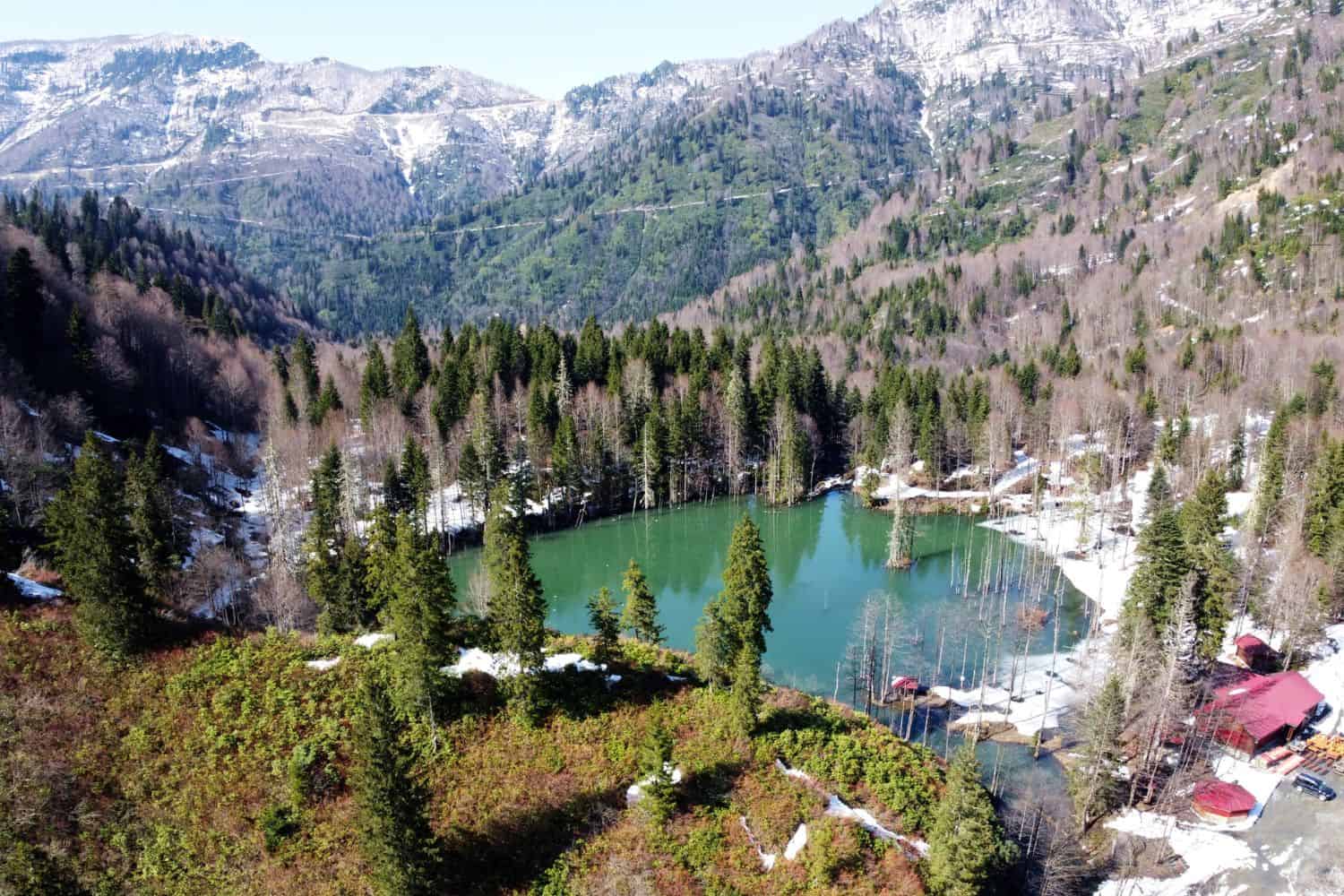
Turkey geographic location is very strategic, and its position has played a significant role throughout history. Located at the crossroads of Europe and Asia, the country has been a nexus for trade, culture, and ideas, emphasizing its historical importance.
Borders of Turkey
Turkey shares borders with eight countries. Here is Turkey physical geography with the neighboring countries and the approximate total length of each border:
- Greece: The border between Turkey and Greece is approximately 206 kilometers long.
- Bulgaria: The border between Turkey and Bulgaria is approximately 269 kilometers long.
- Georgia: The border between Turkey and Georgia is approximately 252 kilometers long.
- Armenia: The border between Turkey and Armenia is approximately 268 kilometers long.
- Nakhchivan (Azerbaijan exclave): The border between Turkey and Nakhchivan is approximately 9 kilometers long.
- Iran: The border between Turkey and Iran is approximately 534 kilometers long.
- Iraq: The border between Turkey and Iraq is approximately 367 kilometers long.
- Syria: The border between Turkey and Syria is approximately 909 kilometers long.
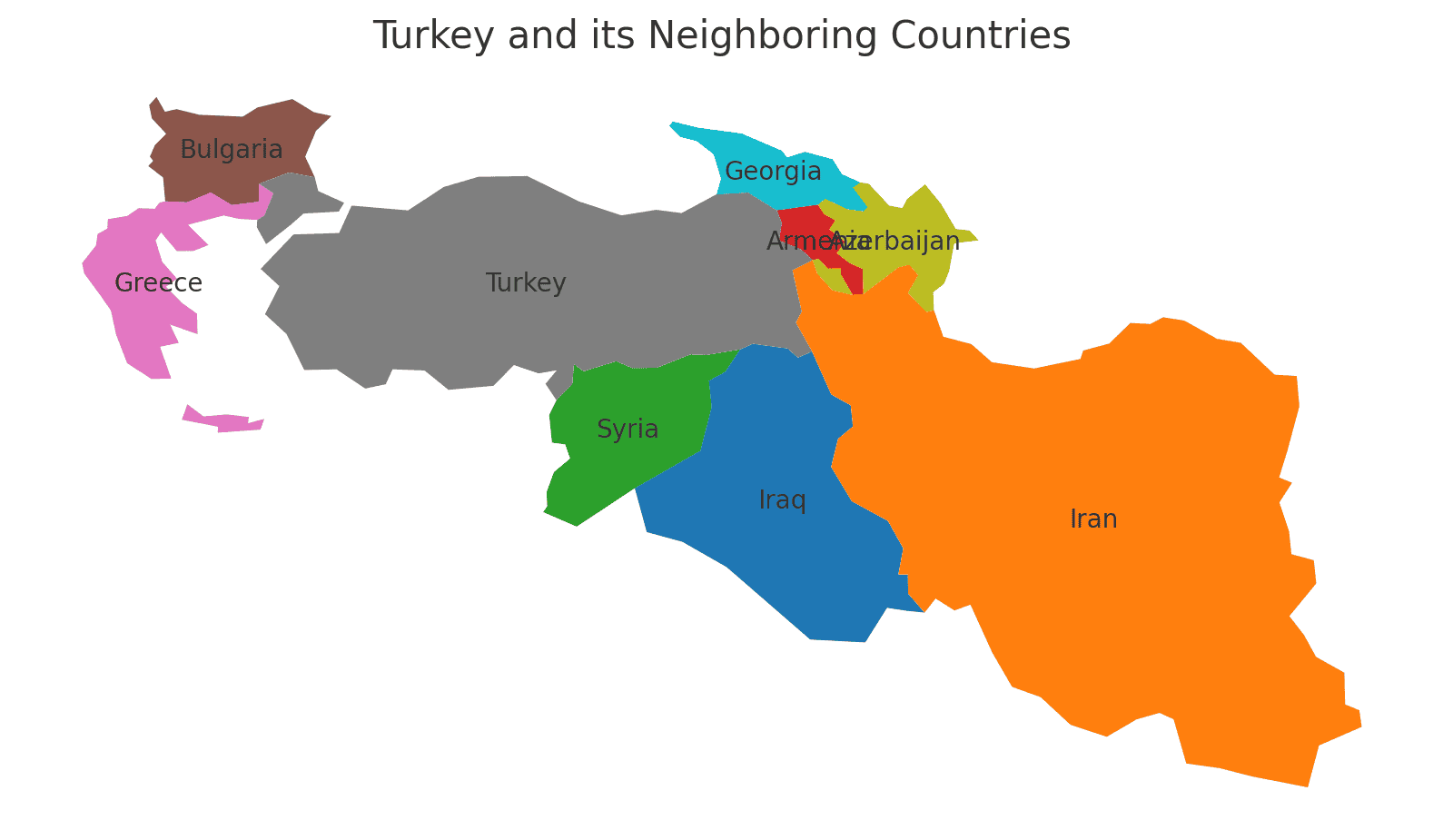
| Turkey Neighboring Country | Border Length (Approximate) |
|---|---|
| Greece | 206 kilometers |
| Bulgaria | 269 kilometers |
| Georgia | 252 kilometers |
| Armenia | 268 kilometers |
| Nakhchivan (Azerbaijan exclave) | 9 kilometers |
| Iran | 534 kilometers |
| Iraq | 367 kilometers |
| Syria | 909 kilometers |
These international borders define Turkey’s connections to different regions and contribute to the country’s geopolitical significance as a bridge between Europe and Asia.
Geography of Ankara Turkey
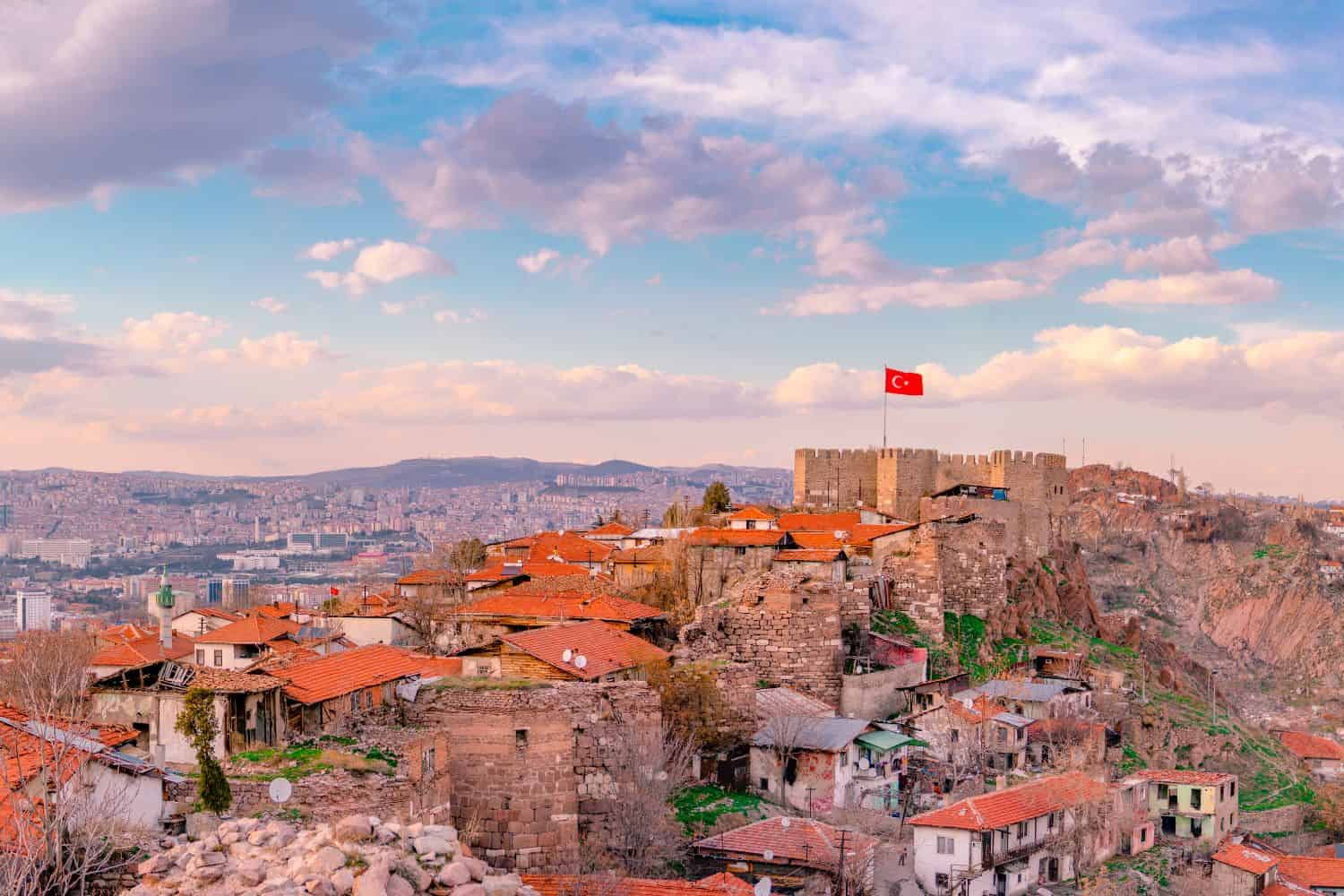
As the capital city of Turkey, Ankara is a captivating microcosm of the country’s human geography. Here, various ethnic groups, including Turks, Kurds, Laz, and Circassians, coexist, contributing to the city’s vibrant cultural tapestry.
Ankara, the capital city of Turkey
- City of Contrasts: Ankara is known for its stark contrasts, where modern skyscrapers coexist with traditional neighborhoods, creating a unique blend of old and new.
- Kızılırmak River: The Kızılırmak River flows near the city, playing a significant role in its trade and transportation.
- Ankara’s Elevation: The city is located in the Anatolian plateau, characterized by its central elevation amidst the vast plains.
- Green Spaces: Ankara is home to several beautiful parks and gardens, including the Gençlik Park, offering a serene escape amidst the bustling city.
- Ankara’s Historical Significance: With a history deeply rooted in ancient times, Ankara has witnessed various epochs and played a pivotal role in Anatolian and Middle Eastern politics and trade.
- Diverse Architecture: The city showcases a diverse architectural heritage, reflecting influences from Seljuk, Ottoman, and modern styles.
- Anatolian Folk Culture: Ankara is a hub for Anatolian folk culture, and its rich traditions in dance and music can be seen and heard throughout the city.
- Anıtkabir: The historic Anıtkabir, located in the heart of the city, is an iconic symbol of Turkey’s political history as it houses the mausoleum of Mustafa Kemal Atatürk, the founder of modern Turkey.
- Ankara’s Economy: The city serves as Turkey’s administrative and cultural hub, attracting people from all over the country seeking opportunities and education.
- Population Growth: Ankara has experienced steady population growth, with a significant influx of immigrants from various regions, leading to urbanization and infrastructure challenges.
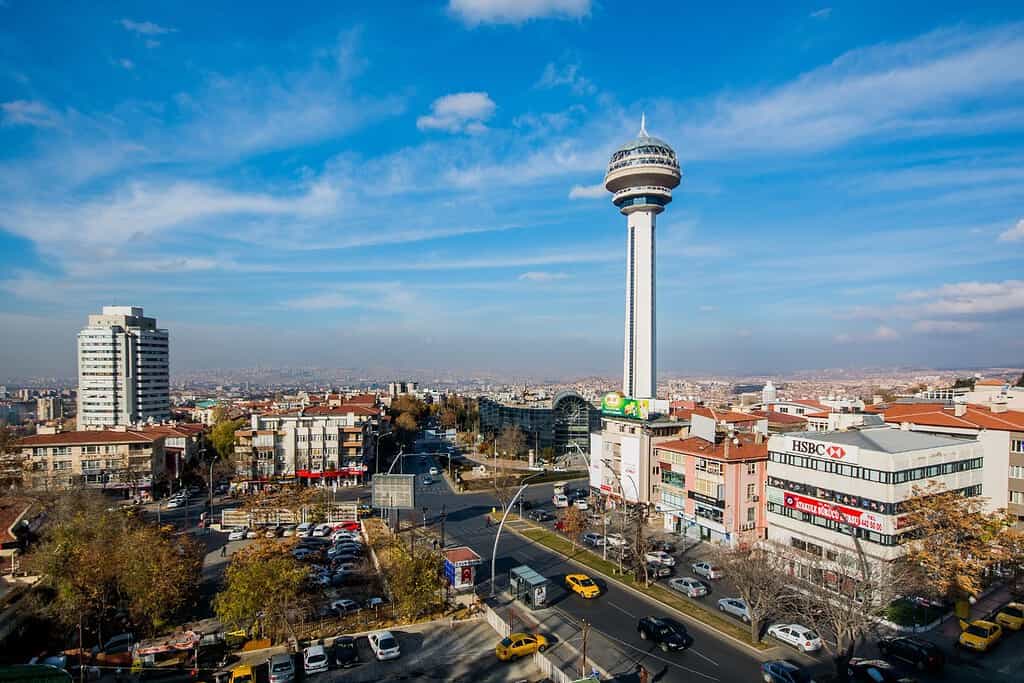
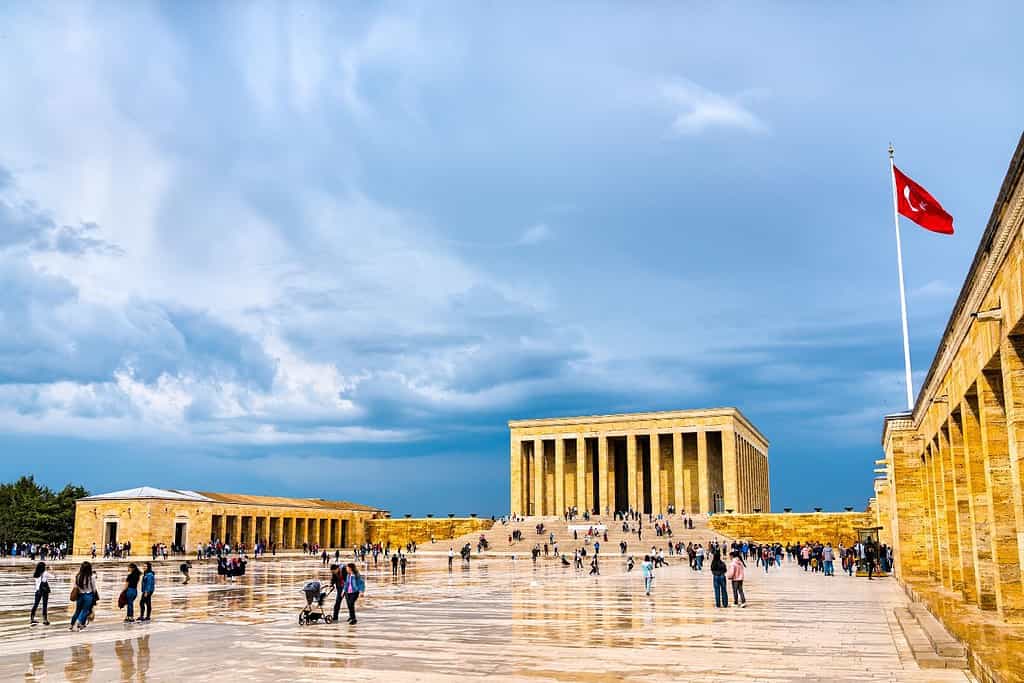
Historical Geographical Importance of Turkey
Throughout the ages, Turkey geographical significance has made it a central stage for historical drama. As empires and nations rose and fell, from the Byzantines to the Ottomans and various Central Asian tribes, Turkey geographic position played a crucial role in shaping the world’s history.
- Strategic Gateway: Turkey’s location as a bridge between Europe and Asia has made it a strategic point for trade, cultural exchange, and military endeavors throughout history.
- Ancient Trade Routes: The famous Silk Road passed through Turkey, connecting the East to the West and facilitating the exchange of goods, ideas, and cultures.
- Byzantine Empire: Turkey, especially its city of Constantinople (modern-day Istanbul), was the heart of the Byzantine Empire, influencing art, architecture, and religion in the region.
- Ottoman Empire: In the 13th century and beyond, Turkey became the epicenter of the powerful Ottoman Empire, which stretched across three continents at its zenith.
- European Encounters: Turkey’s geopolitical position meant it was a battleground for many European powers, especially during the Crusades and World War I.
- Influence of Hittites and Hellenistic Empires: Turkey was home to ancient civilizations like the Hittites and was heavily influenced by the Hellenistic empires, leaving a legacy of archaeological sites and cultural relics.
- Central Asian Migrations: Various Turkic and Central Asian tribes migrated to and settled in Anatolia, shaping its early history and demographics.
- Anatolia and Whirling Dervishes: The Anatolian plateau, with its unique traditions and cultures, and the iconic figure of the Whirling Dervish, have become symbols of the nation’s cultural and historical identity.
- Influence of Turkish Art and Music: Turkey’s position at the crossroads of civilizations gave birth to unique forms of art and music, which have since mesmerized the world, influencing its culture, art, and architecture.
The geographical position of Turkey, straddling the continents of Europe and Asia, is a remarkable blend of historical significance and natural beauty. This transcontinental nation, with its unique position bridging the East and West, boasts diverse landscapes that range from the bustling metropolis of Istanbul to the lunar-like terrain of Cappadocia. Turkey is steeped in history, with a rich tapestry of cultural influences from ancient Greek, Roman, Byzantine, and Ottoman civilizations.
In conclusion, Turkey’s geographical location has profoundly influenced its history and cultural development. Situated at the crossroads of Europe and Asia, and bordering the Black Sea, Aegean Sea, and Mediterranean Sea, it has been a pivotal hub in trade routes and cultural exchanges throughout history. This strategic position has also made Turkey a key player in regional and global geopolitics. Today, Turkey continues to leverage its unique geographic and cultural heritage, playing a significant role in the dynamics of both the Middle East and Europe.
More About Turkey
[the-post-grid id=”50436″ title=”Turkey Main page”]
